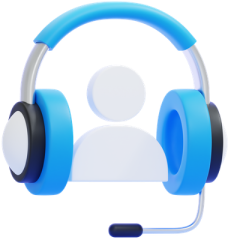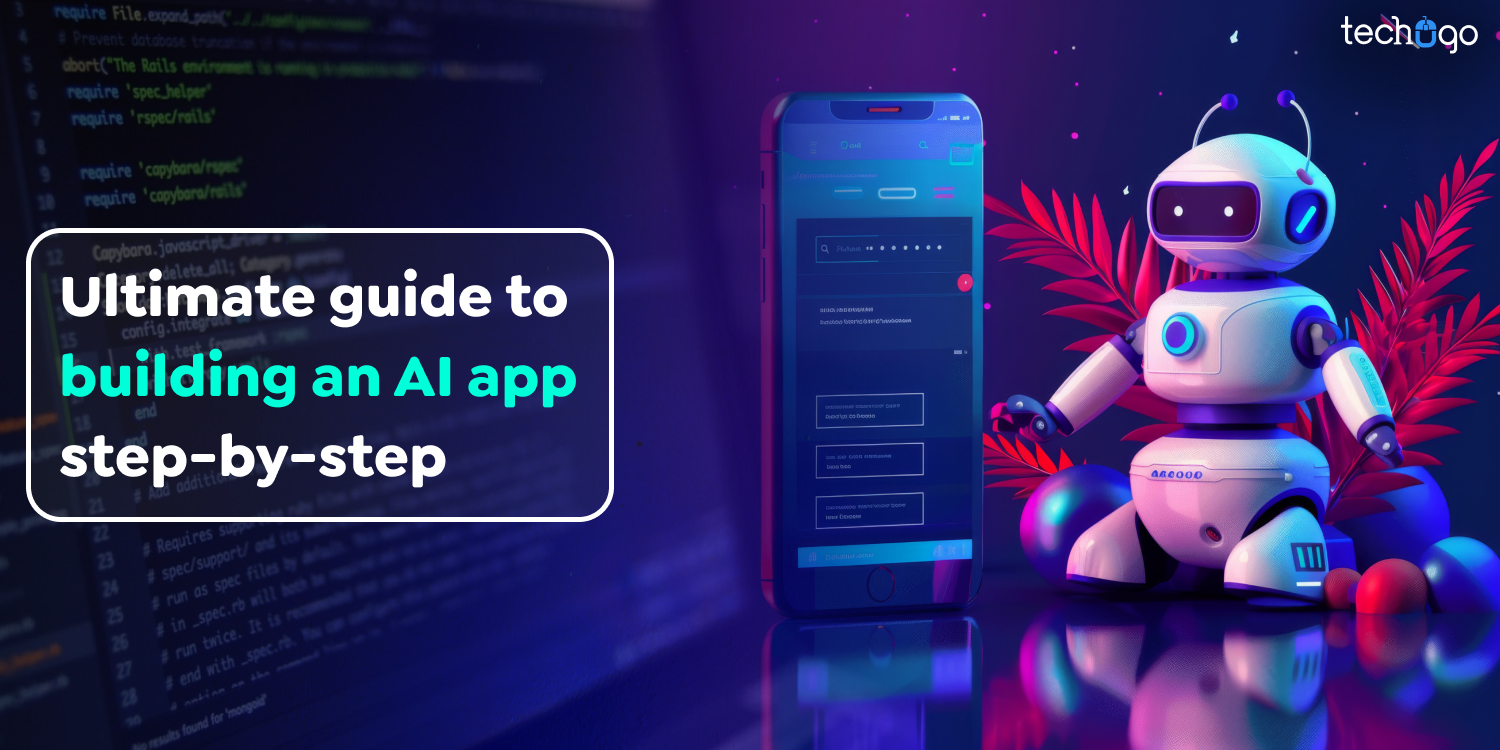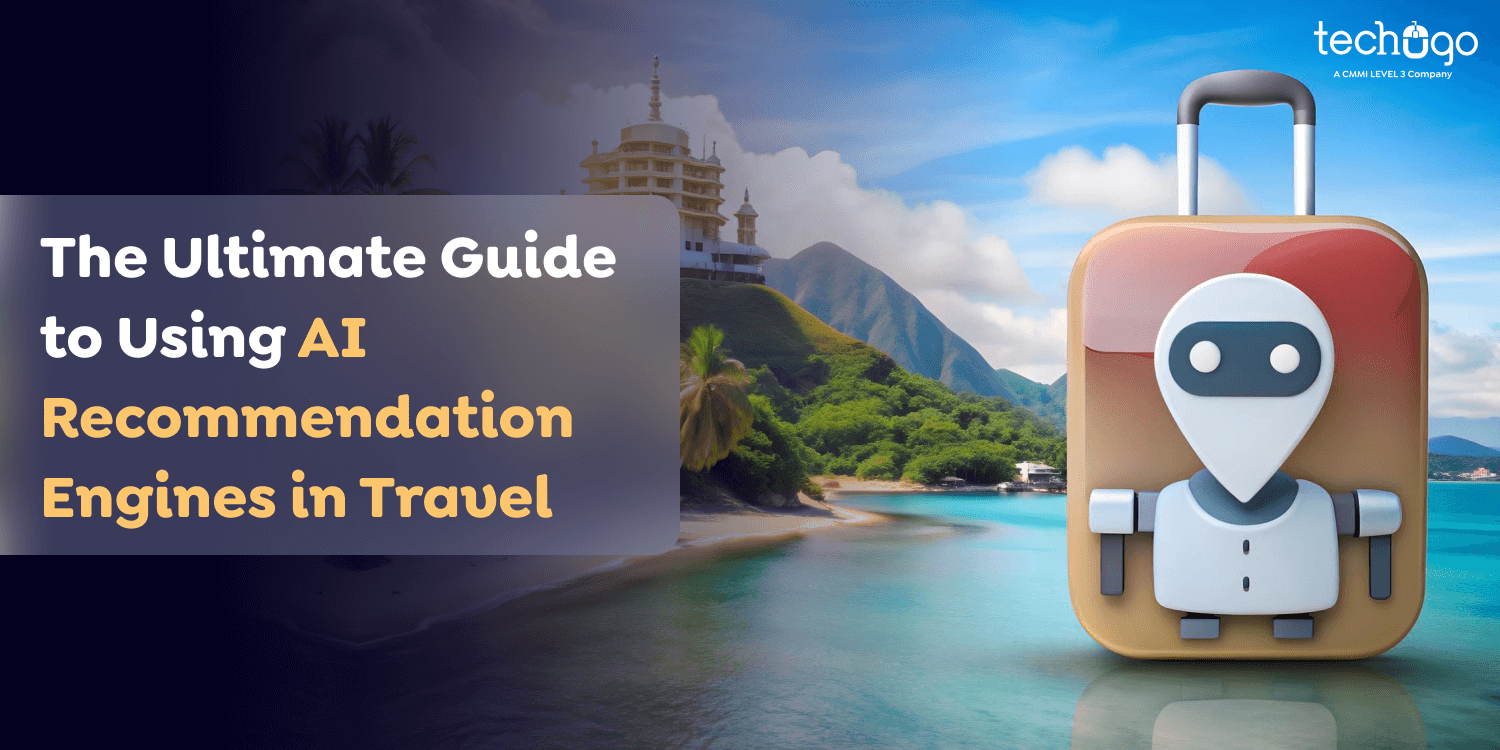27 Sep 2024
Driving the Future: A Comprehensive Guide to Automotive Software Development
Matthew Connor

The electronics and software industries have seen dramatic changes in the past few decades. According to a McKinsey report, the demand for automotive software is expected to grow to around $462 billion (CAGR of 5.5 percent). With the massive shift to an automotive design that is based on software and manufacturing, the entire automotive industry is undergoing technological revolutions in every aspect.
However, investing in automotive software development is vital because it depends on many factors. With all the auto software costs, it isn’t easy to quantify if you do not know the best strategies and information. Let’s look at the advantages, steps, and costs of custom automotive software solutions. Let’s get started.
What software was developed specifically for the automotive sector?

Automotive software development is focused on making vehicles, trucks, and other vehicles smarter. This involves creating and advancing technology, such as driver-free software and automated systems for driver assistance.
As technologies like IoT and driverless vehicle integration grow, the demand for self-driving and electric vehicles will rise dramatically.
The development of apps for the automotive industry not only changes how you interact with cars and vehicles but also changes the whole landscape of automotive, beginning with providing drivers with top-of-the-line navigation systems as well as helping them avoid accidents.
Integrating sensors and other technologies into cars increases drivers’ confidence in their ability to drive.
For the user, it makes the trip more enjoyable.
It will meet all your requirements. Automotive software development company can achieve their digital transformation goals by using data to improve the activities of automobiles.
In essence, automotive software is a system that runs on the cloud and connects to the vehicle’s hardware through the Internet.
Also Read : How to Create a Facial Recognition App: A Comprehensive Guide
Benefits of Automotive Software Development

The primary benefits of creating automotive software solutions are detailed below.
Fuel Economy
In many businesses, excessive vehicle fuel use is a serious problem. Particularly in transportation and logistics, the price of fuel could vary between 30 and 50% of expenses caused by vehicles. Businesses can cut expenses and cut down on fuel use by using software such as engine management software (FMS).
Intelligent Defect Identification
Technologies-related issues are easily identified due to the increasing usage of embedded software in automobiles. The use of embedded software in automobiles Automotive Software Development shortens the length of time that vehicles are in a mechanic’s shop. Typically, diagnosing the issue in a car demands the most effort for mechanics. To fix any problem, mechanics have to remove all engine components.
Predictive Maintenance
Regular maintenance is essential to ensure that your car is running efficiently. In addition to preventing accidents, routine maintenance can assist you in avoiding getting stuck late at night. Yes, keeping maintenance to a schedule will ensure the safety and enjoyment of your driving experience.
Preventing Accidents
Car safety must be the priority. The car manufacturer and the customer must ensure this. Modern cars offer more security than older models due to technology and sensors. Accidents may be the result of the driver’s error. The most common mistakes in driver behavior can be easily rectified by developing an Inventory Management System to prevent accidents.
Also Read : How Offshore Software Development is Shaping Global Business Growth
Automotive Solutions Key Features

Automotive software must include a range of vital elements to ensure efficiency and reliability. These can consist of automating processes to increase customer satisfaction and efficiency and decrease the cost of automobile maintenance. The elements used can differ depending on the end objective.
Many applications share the same features, making your search much simpler. Here’s a list of the highlights:
On-Road Vehicle Assistance
Automotive solutions must provide assistance to vehicles on the road. This is an essential component of providing motorists with prompt assistance in the situation of breakdowns, accidents, or emergencies such as towing. Automotive solutions must also include solutions for changing tires or fuel delivery and locksmithing services that offer security and assurance of safety for drivers.
Advanced Driver Assistance Systems (ADAS)
It is an innovative technology that enhances vehicle security and the driving experience. Features like adaptive cruise control, warnings about lane departure, automatic emergency brake systems, and parking assistance can be part of an ADAS solution, which helps reduce the risk of accidents and ensures safe driving environments for motorists.
Telematics and Connectivity
Telematics solutions enable the ability to monitor information in real-time, exchange information, track vehicles, and use central systems with GPS. They also allow remote monitoring, vehicle diagnostics (preplanned and preplanned), and analysis of maintenance plans that optimize efficiency while decreasing repair time and enhancing the vehicle’s efficiency. Fleet managers can profit from Telematics’ capabilities by using it to increase efficiency, speed up repair times, and increase efficiency using Telematics technology.
Sales Management
Automotive solutions come with sales management functions that help in selling car parts. This includes tools like CRM (customer relationship management), leading forecasting, tracking, and inventory management that help sales teams more effectively manage interactions with customers while monitoring employee performance and boosting revenue.
Tickets and Support
A comprehensive customer support and ticketing system will ensure that each customer’s question and issue is resolved quickly and efficiently by creating tickets, handling inquiries, and streamlining procedures to provide customer support. Additionally, it will establish channels for communication among auto companies and their customers. This is a way to improve customer satisfaction and create loyalty among loyal customers.
Order Management
Order Management allows customers to locate the proper automotive component easily and quickly by searching through the vast database of models, part numbers, or the year of their car and locate the component they’re searching for quickly and efficiently.
This feature provides accurate information on the availability of components and compatibility. It also minimizes errors when processing orders, provides automated ordering with tracking features, and provides regular updates to increase the efficiency of automotive companies’ operations.
Inventory Control in Dealerships
Inventory control at dealerships is crucial for identifying cars and their components and keeping track of inventory levels in real-time. Automated replenishment helps eliminate excess and shortages, and categorizing provides the most effective inventory control based on the car’s model, type, and state.
Inventory management allows you to locate products more efficiently while also keeping track of trends in turnover and sales. This helps you maximize the quantity of inventory, reducing expenses while increasing cash flow, which can improve operations efficiency.
Vendor Management
The most important factor in the automotive industry’s success is coordinating suppliers and vendors efficiently. Software with management capabilities can help streamline the communication between vendors from different locations and be the central repository of information from vendors, such as the performance of their delivery times, performance standards, quality measures, and reliability of service metrics.
A functioning dealer or vendor network will ensure the protection of the supply chain, cost reductions, and more effective business relations.
Repair Alerts
This feature notifies Customers about the necessity for service or maintenance. Based on diagnostic data, along with an analysis of the history of service estimates, repair alerts, and mileage, the system will determine if the oil needs to be replaced or when tires need to be replaced, for example. Customers are informed in advance so that they are prepared for any maintenance required on their vehicle.
Effective maintenance methods ensure that vehicles run at peak efficiency for both customers and fleets by cutting repair costs, increasing the value of repair or parts providers, and reselling other products or services to increase revenues and profits. Effective strategies also help service providers by boosting customer loyalty or marketing additional items or services, further increasing profits and revenues.
Sales Management
The feature helps dealers monitor the entire sales process, from creating leads to closing sales through sales monitoring lead management, sales monitoring, and CRM (Customer Relationship Management). It gathers leads from various sources before assigning them to sales reps to follow up with, and the tracking feature monitors the progression of leads throughout their funnel.
CRM technology records customer data, such as interactions, preferences, and other details, to enable individualized communication and follow-up. Sales tracking gives managers an understanding of the sales process, allowing them to set targets, identify patterns, and enhance strategies. It also aids in identifying the use of automotive software to enhance the conversion rate and customer satisfaction in terms of revenue.
The billing procedure is automated for all labor elements of service, and services. Invoicing tools that ease the financial management process by creating expert invoices and statements in brief while also processing outstanding invoices fast and seamlessly integrating accounting software for efficient accounting control.
Automated invoices can eliminate errors, speed up processing time, and improve cash flow by facilitating rapid payments. Businesses can also provide their clients with multiple payment options to increase customer satisfaction in general.
Also Read : Unlocking Success with Nearshore Agile Development: A Comprehensive Guide
Steps in the Automotive Software Development Process (APDT)

The need for software development within the automotive industry is growing rapidly. To meet industry standards and user requirements, creating software requires a rigorous development process encompassing initial concept/design stages through development/testing/deployment stages—each essential for producing top-quality software solutions. Let’s look at this journey starting from the beginning.
Establish Goals and Requirements
The first step in creating automotive software is developing specifications and objectives and gathering information from key players like repair shops, car manufacturers, and end-users about what they expect and the requirements for the software they wish to create. Then, you must decide on your software’s features, such as ISO 26262 safety standards or architectural standards like AUTOSAR, for security compliance.
Research the Market
Market research is crucial to comprehending your competition’s strategies, understanding your customers’ requirements, and evaluating their preferences. Companies can research existing automotive software to discover the strengths and weaknesses of these software solutions and identify opportunities to create software.
Collect information from customers through interviews or surveys. After that, you can focus groups and your efforts on designing your product with the highest degree of differentiation and distinctive products.
Design a Reliable Software Blueprint
A solid foundation for software is essential to ensure the success of automotive software development. Consequently, making precise plans that outline the structure of the software, its components, and interconnections is vital to the success of developing software. Making the right frame, technology, and platform choices will ensure stability, performance, and scalability. Modular development lets you upgrade and maintain the software more easily.
Once an architecture is identified, you can gradually create custom automotive software. Make sure you adhere to the requirements for design codes, standards, and codes. You can also utilize tools to develop automotive software to create software modules. Utilize agile processes that permit regular testing, continuous development, and feedback loops. This means that bugs can be discovered and rectified faster, resulting in a better product.
Test Rigorously
As more vehicles are connected to the Internet, purity should be an important concern for developers. They are equipped with solid security measures to protect against hacking and unauthorized access. Additionally, reputable automotive software development companies regularly examine security systems for any issues that need to be corrected to ensure that users’ data is secure and protected.
Prioritize Cybersecurity
As more vehicles become connected, cybersecurity becomes more crucial. Protect your software against hackers or accidental access by using strong security with passwords that have strong encryption. Frequently review security and identify areas of weakness that need to be addressed if any are found. This will ensure that the user’s data is secure and that the software is running smoothly.
Integrate With Vehicle Systems
Integrating software in cars is a complex and complicated process but essential to the car’s functioning. Ensuring that everything is operating smoothly between the various components, such as Engine Control Units (ECUs), Advanced Driver-Assistance Systems (ADAS), and entertainment technology, is crucial as it makes this process easier and more practical for those who use it.
Standardized communication methods will help these systems communicate. When creating software for cars that functions smoothly, it must be able to function in its settings to guarantee the highest performance while also improving user experience and making it easier for drivers. Ensuring this is done correctly when designing car software makes its installation essential to make its use more productive and comfortable than ever for drivers!
Once installed, the car software requires careful planning before putting it in place. Work with the suppliers and stakeholders to ensure a smooth and easy experience. Offer training to technicians and users anytime and document the steps they must follow to utilize it. Keep an eye on the installation process so that you can fix any issues that occur and make sure that the installation runs efficiently.
Maintain and Update
Regular maintenance and updating of the software are also essential to ensure that the system runs at its best with time. Create a schedule containing every detail, including regular updates, and fix any potential glitches to ensure that the program runs smoothly with no problems or glitches. To plan for future updates, users must provide feedback. Updates ensure that software remains up-to-date and is compatible with the technology users enjoy using. Are You Planning Custom Software For Cards? Follow These Steps
Cost of Automotive Software Development
The cost of developing software for automotive applications can range anything from $90,000 up to $5000 or even more. The cost of development is influenced by various aspects, such as its capabilities, complexity of features, and where the developer is located, as well as the developer’s team and their knowledge. We’ll offer an estimate of costs related to Automotive Software development.
Planning Stage
Planning automotive software development may cost anywhere between $5k and $25,000. The entire process includes all the essential elements, including conducting research and analyzing what is happening in the Automotive Software Market, intensely studying customers’ needs and preferences, competitors’ strengths, and what customers want. It is essential to know what the software is required to accomplish and whether it can assist in creating revenues.
User Interface Design
UI design involves developing inferences to draw users in, determining how the system functions, and setting the conditions for prototyping. The most important thing is that UI design can cost anywhere from $10,000 to $40,000. Creating prototypes is crucial as it enables designers to examine designs before finalizing them. This process ensures that issues are resolved quickly, which leads to time savings and money savings.
Development Phase
When developing software, programmers write code to connect the various components and verify that it is working properly. Software development for automobiles can cost between $40,000 and $150,000, but the precise cost will depend on how complicated the program is. The most important tasks in this stage are writing efficient code, connecting the software to devices such as ECUs and sensors, and testing the software thoroughly.
Tools & Hardware
The cost of development and hardware tools can range from $10,000 to $150,000. This includes expenses such as fees for licensing to use compilers, the equipment required to test, as well in debuggers.
Certification and Compliance
Adhering to the regulations and industry standards and obtaining the correct certification are equally essential. The cost of obtaining the certificate ranges from $10,000 to $80,000. It includes tests, checks, and approvals to verify that they comply with the rules of the automobile industry and safety requirements.
Software Deployment
The use of automotive software requires the creation of cloud servers and services. It’s essential to ensure the software functions without glitches or issues. The cost for setting up can range from $5,000 to $30,000. In this stage, it is crucial to choose the most suitable software and infrastructure so that it can start up smoothly.
Maintenance & Support
Once the software is launched, regular maintenance and updates are vital to ensure that it operates efficiently. Maintenance and support generally cost between $30,000 and $80,000 annually. This includes completing issues, updating software that assists users, and responding to users’ questions.
Conclusion
In our development of automotive software companies, technology will clearly determine our progress in this field. Specialized companies play an essential part in encouraging efficiency and innovation and providing excellent customer service. They give automotive companies an advantage in the face of rapidly changing environments.
With Top Tier Automotive Software Development Company, we have identified the essential aspects of an exceptional automotive software development firm. Through the success stories presented within our case studies, we show the impact innovative software solutions have had on companies across all industries of the automotive industry.
In a time where technology is driving advancement, it is a crucial factor in selecting the best automotive software company to work with to achieve success; it is similar to choosing an all-weather companion on the path to prosperity. Suppose you consider industry experience, technical expertise, technical competence, compliance with the laws, and clients’ satisfaction when choosing. In that case, a software development company like Techugo can aid in more prosperity in the digital era. Utilize the technology’s power to ensure greater efficiency in the development of automobiles!
Get in touch with us today to accelerate your digital transformation journey!
Get In touch
We are excited to here from you and let’s start something special Together. Call Us for any inquiry.
Write us
sales@techugo.caJust a call away
About you




